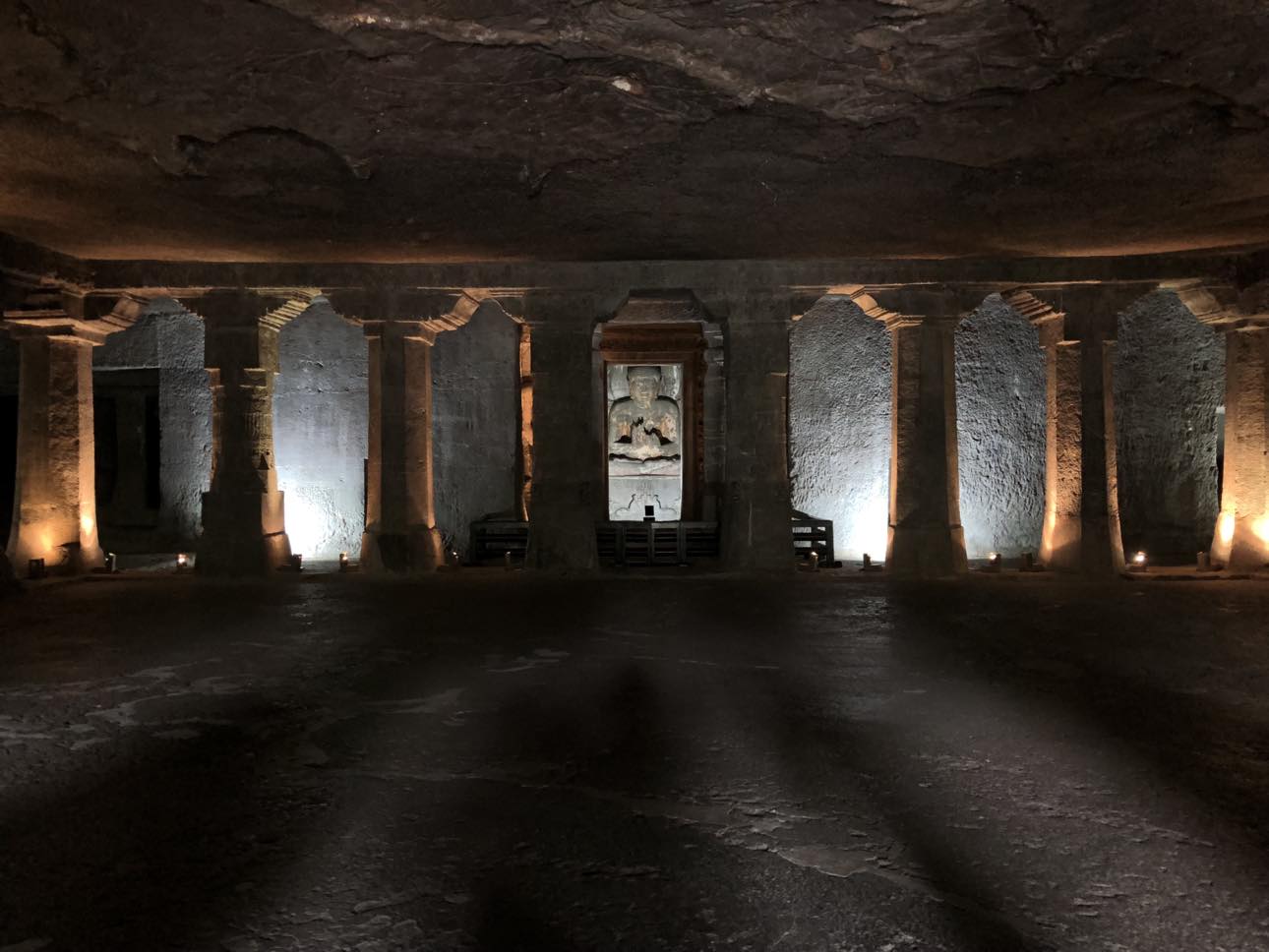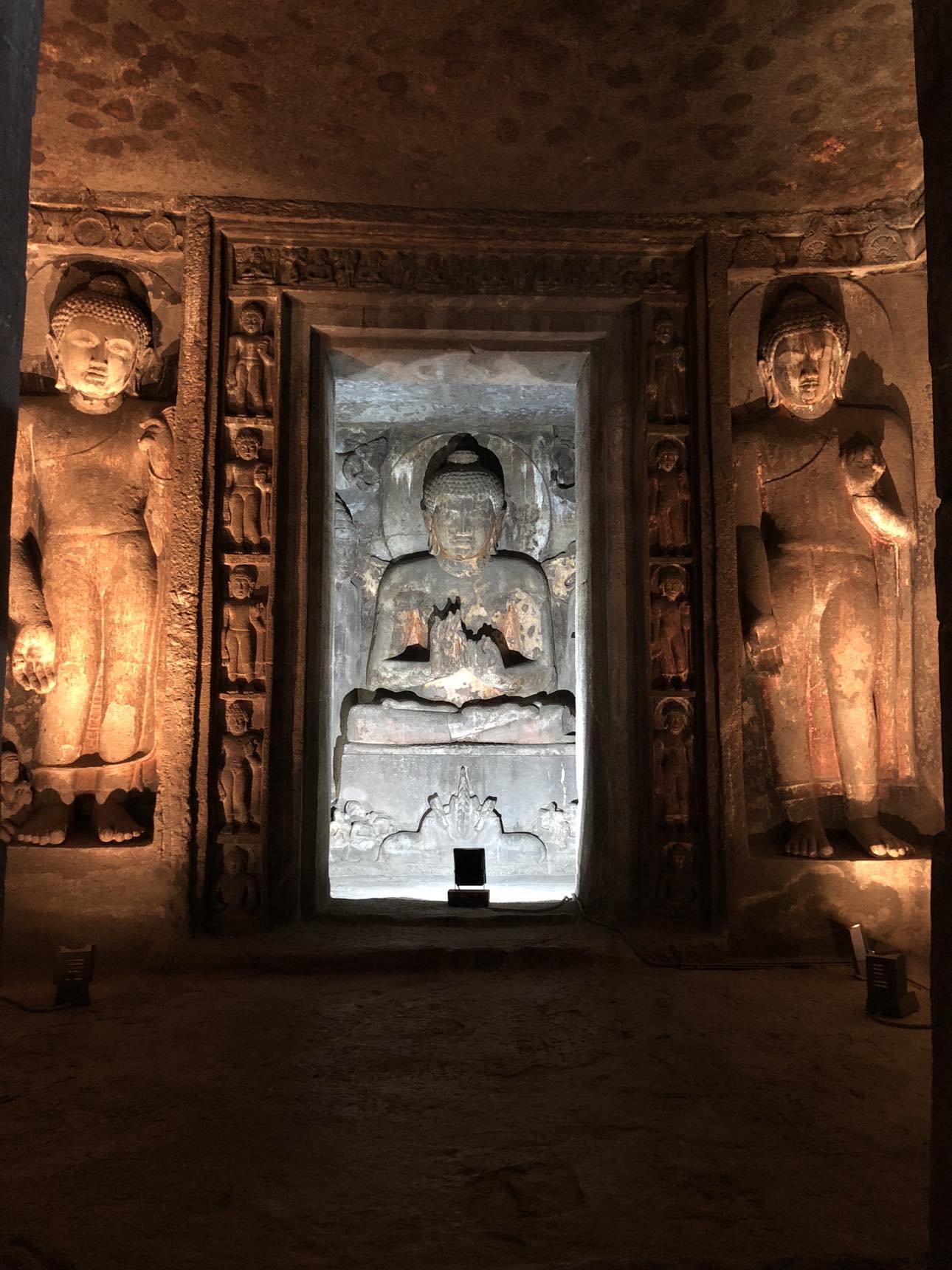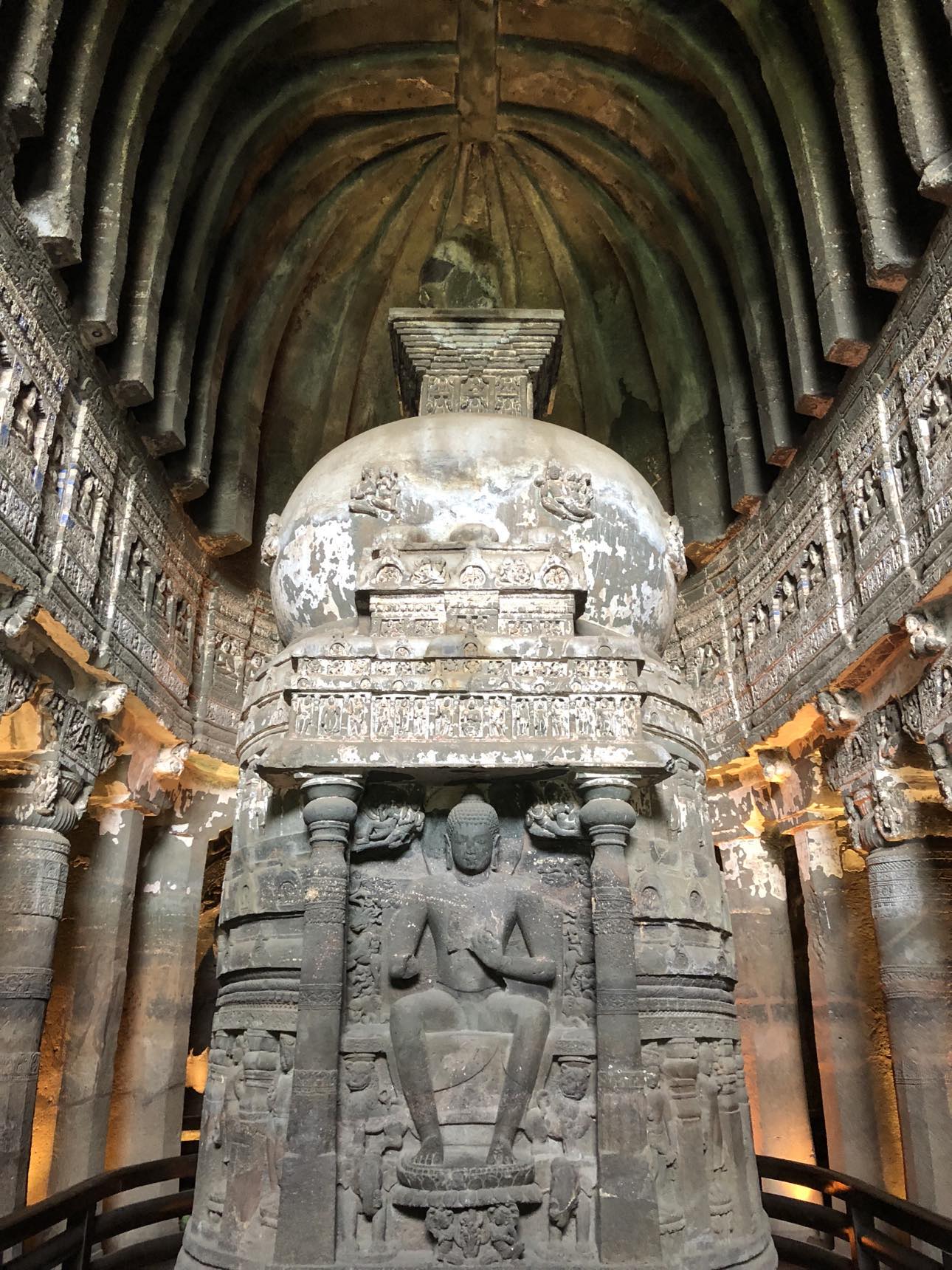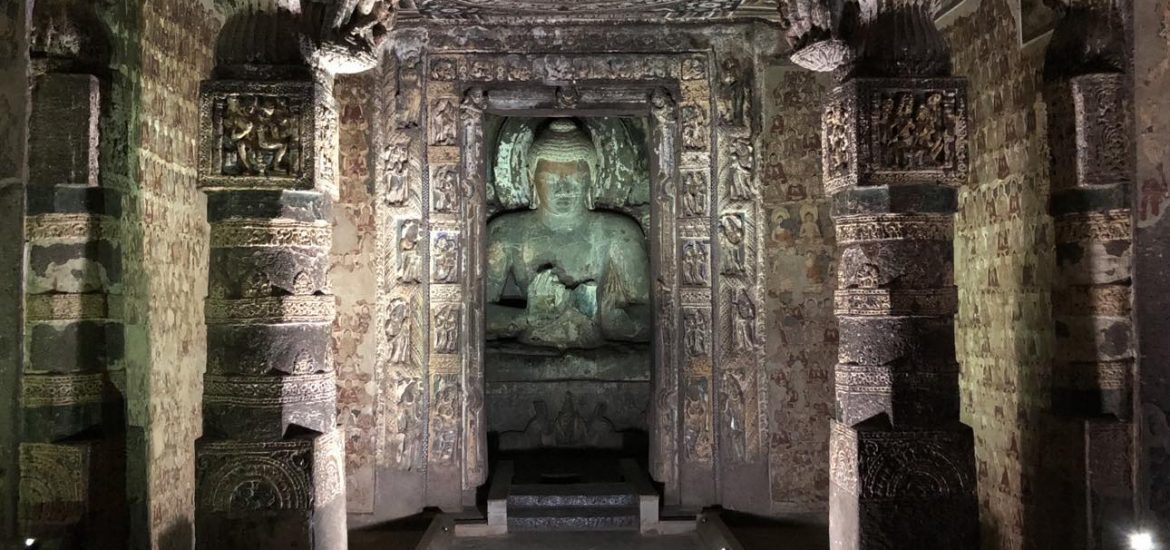In a Tweet dated 3 May, @artinchow offered a most inspirational historical scene. His was an invitation to visualize a brief but vivid tale of how a typical evening might have been spent at a 7th century monastery. If you have had the fortune of visiting the rock-cut caves at Ajanta, you might be able to form in your mind’s eye a vihara, once only a temporary shelter in the days of the Buddha and pre-sectarian Buddhism, now as an enduring ritual center for the sangha.
The vihara of this kind, a chaitya, would be dominated by a main hall, a stupa at the far end of the room, and colonnaded chapels festooned with wall art engraved from the base of the walls all the way up to the pillars that supported the cave’s yawning interior. When it comes to architecture and interior design, I like to think of my ideal “7th century monastery” as a cross between Cave 4 and Cave 19, complete with a great hall for prayer and meditation, an antechamber with a Buddha image, and a stupa in the hall.

When the service began, which would have been relatively early in the evening due to Vinaya rules for the monks’ evening meals and their bedtimes, they could join in a winding line streaming into the chaitya, and circumambulate the stupa three times from the right. They would chant hymns and devotional praises to the Buddha while offering incense and flowers.
After circumambulation and setting down the candles and flowers at the foot of the stupa, the celebrant monks moved in an orderly and quiet fashion to the main hall. There would have been a great shuffling sound as they all sat on the cool floor, with some of the monks having enjoyed the privilege to bring straw mats. At the head of the assembly was the simhasana, the Lion Throne, an aniconic representation of the Tathagata. Engraved above the Lion Throne were three wheels, representing the three treasures.

Standing beside this ancient representation of the “thus-gone” – present throughout the universe yet no longer quite here with us – was the kulapati, the stern-faced abbot of the monastery. He would have been responsible for the upkeep of the sanctuary, while also administering the day-to-day proceedings of the monastic community, including overseeing the labor of the people that worked nearby, including farmers and artisans.
As the ceremony continued, the abbot would summon the sutra-reciter, a specialist monastic possessing unique skills in the reciting of Buddhist scriptures and perform a vesper or evening service. It was conducted in three parts – the first in ten verses listed the divine qualities of the Buddha. Sanskrit poet Ashvagosa’s work, namely the Buddhacarita, was the favorite go-to text for this part. The second was devoted to buddha-vacana: the words of the Buddha, the earliest of which would have come from compilations included in the Sutta Pitaka, first among the Three Baskets (Tipitaka). The third part was taken up by prayers in the name of accumulating merit, or punna, and bringing it to maturity, a perennial concern of early or non-sectarian Buddhism.

After this three-part recitation ceremony was concluded, the abbot would rise to salute the Lion Throne, followed by his deputy and the sutra-reciter, followed by the rest of the monastic congregation. They would bow before the aniconic image and the rest of the other devotional objects, before leaving the chaitya in a solemn procession.
Another evening, another holy service complete – all in a day’s sacred work for the monastic community, the repository of sanctity that remained faithful to the three treasures. This evening, lost to us in the murky mists of time, was no doubt a night to remember, like so many others.
The first image is of Ajanta Cave 2. Image by the author


